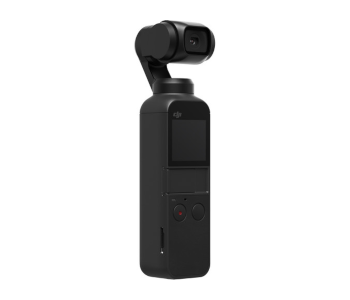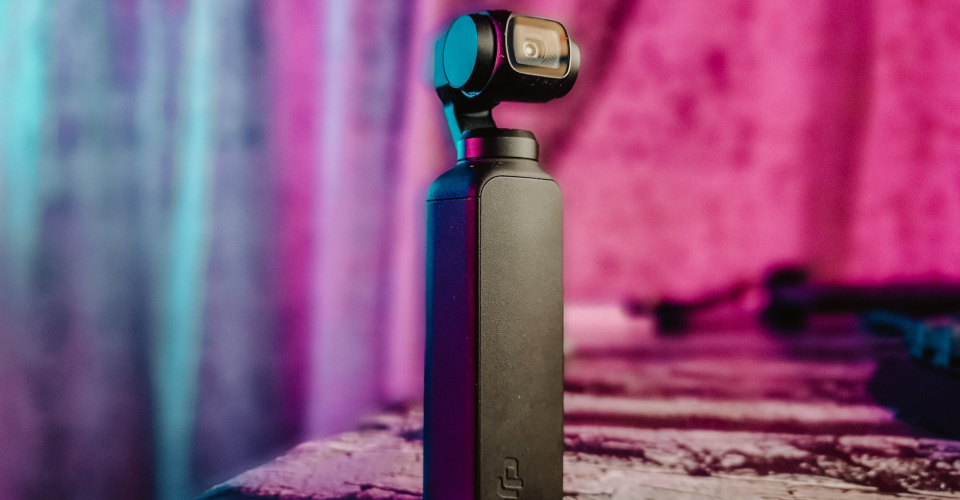How to Avoid Overheating Errors on your DJI Osmo Pocket
Released on the tail-end of 2018, the Osmo Pocket by DJI revolutionized travel vlogging and casual filmmaking. At the time of its launch, the Osmo Pocket was the smallest integrated camera and three-axis gimbal. With its unparalleled video stabilization, mobile app compatibility, and a suite of instant video editing options, the Osmo Pocket remains fairly popular even today.
However, it’s worth mentioning that the Osmo Pocket is a product that is the first of its kind. As with any first-generation device, the number of hiccups that users encountered with the Osmo Pocket was higher than usual. In this article, we’re tackling the most common problem – the “overheating error.” What causes this error and how can it be avoided?
What can cause an overheating error?
If you’re using an Osmo Pocket, then you’ll know that you have run into the overheating problem if the gimbal displays the error message “protecting gimbal, press to resume.” When this prompt comes up, the Osmo Pocket will shut down presumably to protect from overheating damage. It’s easy to see how this can be a huge nuisance, especially if you’re in the middle of shooting a video.
Even though this problem had already been reported by a huge number of users, DJI has not come out with a statement on why it happens and the conditions that can cause such an error. Overheating also occurs in the DJI Osmo Mobile line of handheld gimbals for phones, although the variable weight of phones and optional lenses makes the performance threshold of that product a bit less predictable.
Without any official statement from DJI, all we can do right now is to infer why this error happens. Based on a basic understanding of how the product works, these are some of the factors that can contribute to overheating.
Motor overload
Just as with any gimbal, the Osmo Pocket has motors that work in tandem with sensors. The sensors detect the movement of the gimbal in any direction and the motors move to keep the camera in the proper upright position. The constant movement of these motors generates heat from friction. After prolonged use of the gimbal, it’s not unreasonable to think that the temperature of the motors can go beyond a pre-set threshold value.
Data processing

The Osmo Pocket is quite unique, even in the market for handheld gimbals, since it comes with an integrated camera. Without a separate DSLR camera or phone camera, this means that the Osmo Pocket needs its own processing unit. This is responsible for translating data from the camera’s optical sensors to electronic data for storage.
Several factors contribute to the “burden” of the camera’s processor. These include the resolution of the video, the framerate, and any post-processing options. However, these can all be simplified into a single term -the bitrate.
Based on the experience of Osmo Pocket users, overheating errors become more common when recording under super-fine mode. This allows for recording videos at a higher dynamic range and maximum resolution. Ergo, a higher bitrate. Recording in super-fine mode effectively maxes out the bitrate capabilities of the Osmo Pocket, which means that its processor uses up more power.
In many cases, recording in super-fine mode for a prolonger period is impossible without running into the overheating error. The increased power draw will also mean that the gimbal’s batteries will run out faster.
Overheating batteries
The ion-exchange chemical reactions that happen inside a battery as it stores and releases charge are exothermic. This means that the battery of the Osmo Pocket will inevitably heat up while you’re using it. While this is normal, a hot battery can compound the handheld gimbal’s overheated conditions.
Ambient temperature
Overheating cannot be blamed solely on the Osmo Pocket, as the temperature of the environment can also play a huge part. On very hot and sunny days, you can probably expect the Osmo Pocket to run into more frequent overheating problems. This probably can’t be helped, especially since the Osmo Pocket has no means for active cooling.
Ways to prevent overheating of your Osmo Pocket
With a more detailed understanding of the factors that can contribute to overheating, we can now come up with ways to address this perennial problem. Take note that these measures aren’t guaranteed to completely eliminate overheating. Instead, these are meant to reduce occurrences of overheating and hopefully avoid long-term damage.
Make sure the gimbal goes through initialization
Every time the Osmo Pocket is powered on, it goes through a quick initialization phase where the gimbal moves through the maximum range of each axis of movement. This is a very important step that is done to check if nothing is impeding the movement of the gimbal. By making sure that the gimbal can move freely, you also ensure that the gimbal motors do not get overburdened.
Use a lens only if necessary
While the integrated camera of the Osmo Pocket is excellent for its size, its narrow field of view is its biggest limitation. For this reason, detachable wide-angle lenses are among the most popular accessories for the Osmo Pocket. These are great for shooting scenery and are easily available from a variety of third-party brands.
The problem with attaching a lens to the Osmo Pocket camera is that it adds a significant load to the gimbal motors. The camera of the Osmo Pocket is very light, so even a small lens can be an ample addition to its total weight. While the gimbal motors are probably designed to have a capacity beyond that of the camera, overloading it for a long time can likely contribute to overheating problems.
If you must use a wide-angle lens for your Osmo Pocket, just keep it on the camera for as long as necessary.
Record in low settings, if possible
While DJI has graciously provided top-of-the-line filmmaking options for the Osmo Pocket, it’s apparent that the drone cannot sustain recording at maximum settings for a long time. The super-fine mode certainly works well if you want your videos to come out at maximum resolution and dynamic range, but you might want to hold back on using it for extended periods.
Aside from higher bitrates, there’s also an indication of super-fine mode making use of additional denoising filters to the videos, especially when shooting in low light.
The point is that recording in high settings puts more burden on the camera’s processor. If you don’t need to record your video at 4K, then knocking it down to 1080p could go a long way towards avoiding any issues with overheating.
Use only genuine DJI batteries
We have already pointed out that batteries heating up is normal and cannot be avoided. This is natural but becomes even more pronounced if you swap out the gimbal’s batteries with a low-quality replacement. Should you need to replace the Osmo Pocket’s built-in batteries, we recommend getting them directly from DJI if you want a similar performance.
Try not to move the gimbal around too much
This may sound counter-intuitive considering that a gimbal camera is meant to be moved around, but you may want to take it easy with the gimbal’s movements if you want to avoid overheating problems. If you can manage to hold the gimbal with a steady hand and minimize any undesired movement, you can keep the gimbal motors from getting overworked and generating too much heat. This is probably a tall order, considering the primary purpose of the Osmo Pocket.
Take breaks during filming
Just as with any electronic device, the best way to keep the Osmo Pocket from overheating is by letting the device take a break every now and then. Any heat generated by the hardware of the gimbal naturally dissipates into the environment. By turning off the Osmo Pocket periodically, you give it time to cool down between demanding shoots.
If you’re planning to shoot for an entire day, then taking frequent breaks also gives you a chance to look at the videos you’ve shot so far and recharge your creative juices. There’s no need to stress out because of your Osmo Pocket overheating. Both you and your hardware need to take breaks!
Despite the unique appeal of the Osmo Pocket, it’s far from being a perfect device. The top-of-the-line filmmaking features simply don’t reconcile with the gimbal’s small form factor which reduces how quickly the device can dissipate heat. The overlying principle between all these tips is simple – don’t push the gimbal’s hardware to its maximum capacity. If you must, then make sure that you also give the device ample time to rest.
Final thoughts
The Osmo Pocket was hugely popular back when DJI launched it. And why not? It was an integrated camera gimbal that quite literally can fit in your pocket. There was nothing like it back then that offered a unique combination of a high-quality camera, mechanical stabilization, and a compact form factor.
However, the novelty of the Osmo Pocket also meant that it came with a lot of areas for improvement. Its compact design, as well as the need for powerful features, seems to have created an imbalance that frequently results in overheating. While there are measures we can take to avoid overheating problems right now, we expect to DJI to address this issue in the future iterations of the Osmo Pocket.

